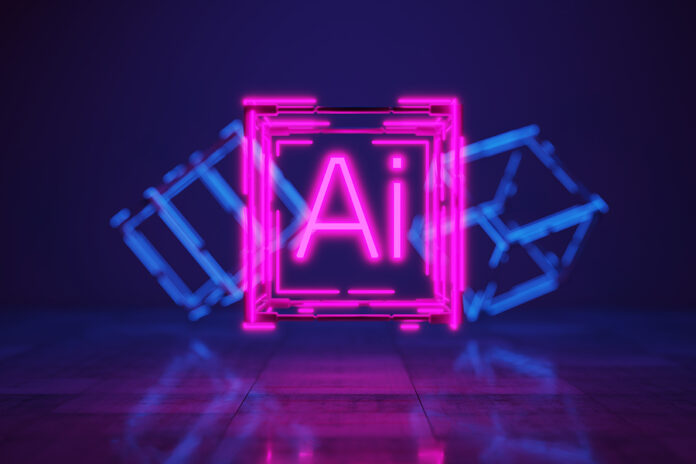
By Richard Mendis, CMO at HireLogic
10 years ago, employers had to accommodate the rapid rise of smartphones in the workplace. Now, history repeats itself as employees quickly adopt productivity-boosting AI solutions.
In late 2006, one quarter before Apple introduced the iPhone, just 11% of the US population owned a smartphone. The first iPhone was released in 2007, the first Android phone followed in 2008, and by 2012, over 40% of the U.S. population owned a smartphone. The smartphone adoption rate outpaced nearly any comparable technology in the leap into the mainstream and rapidly became a personal productivity device that users leveraged everywhere, including work.
We are once again facing unprecedented emerging technology adoption with the rise of ChatGPT, which in just 5 days hit the 1 million user mark. For comparison, Instagram was launched in 2010 and took 2.5 months to hit 1 million users, and Facebook was launched in 2004 and took 10 months to hit 1 million users. As of January 2023, less than 3 months after its launch, ChatGPT was estimated to have 100 million monthly users, making it the fastest-growing app in history. Unlike social media apps and similar to smartphones, ChatGPT is much more likely to also be utilized for workplace productivity.
As someone who was immersed in the mobile app world during its early days, it is clear to me we are about to see history repeat itself. When employees became increasingly dependent on their smartphones, organizations had to accommodate them with IT security and HR policies that ensured smartphones could work in harmony with the corporate world. Now, the proliferation of AI solutions like ChatGPT will be adopted even more rapidly by employees. Organizations will have to adapt to a workforce growing ever more reliant on these personal and professional AI assistants.
This places a slew of new expectations on HR and organization leaders to proactively manage talent and policy to permit AI adoption and utilization that supports productivity benefits while also avoiding potential misuse. With a rapidly evolving regulatory and AI solution landscape, it’s a challenge to keep up with offering the right learning and development opportunities to appropriately upskill employees, clearly communicate job responsibilities, hire for newly created roles related to AI, and develop governance policies around AI use.
Here are 5 steps you can take right now to manage talent more effectively in the age of AI.
1. Update job descriptions and expectations
AI is expected to affect entry-level and mid-level white-collar professionals and knowledge worker roles the most (e.g. marketing, legal, research, etc.). In some cases, using AI actually enables new workers to outperform more experienced workers who do not use AI. So as the use of AI solutions grows more prevalent in the workplace, many of your employees will be expected to use these solutions to be productive and fulfill the responsibilities of their job. Therefore, your HR department should work with hiring managers in these areas to re-evaluate roles to determine how they may be impacted by AI requirements and update job descriptions or current role expectations accordingly. Just as job descriptions commonly state how much experience candidates are expected to have with solutions like Microsoft Office or other productivity software, they should also detail what extent of experience or familiarity with domain-specific AI solutions is necessary or preferred for the job.
Keep in mind that job expectations go both ways. Just as smartphones and mobile apps became standard productivity tools that employees expect to be able to leverage at work, it will become increasingly common for job seekers to expect employers to offer or support the use of AI productivity solutions in certain roles. For example, salespeople may expect access to sales intelligence tools like Gong and marketers may expect to leverage generative AI tools like Jasper. If your organization isn’t prepared to support AI productivity tools and discuss how it’s expected to be used in job descriptions and interviews, some candidates may see that as a sign that you’re not a forward-thinking organization and take their talent elsewhere.
2. Leverage AI solutions to help with talent management functions
Using AI to help manage the demands of overseeing talent in a post-AI world sounds very meta, but it works. AI helps streamline many of the most repetitive and challenging functions of talent acquisition and management. So it’s no surprise that a February 2023 survey found that 79% of employers already use AI for recruitment and hiring. Organizations that adapt to using AI for recruitment and hiring will gain a competitive edge by finding the most qualified candidates faster. Organizations that maintain manual processes are subject to well-researched side effects of unconscious bias during hiring (HBR reports that 85-97% of hiring decisions are made based on gut instinct) and experience higher turnover and employee dissatisfaction because hiring decisions are less data-driven.
AI-based interview intelligence solutions, like HireLogic, can help you generate interview questions for any position, transcribe and extract objective candidate insights from interviews, and automatically summarize feedback about candidates to help HR and hiring managers make more objective decisions faster. Generative AI tools like ChatGPT can help you to create accurate job descriptions. Job boards like LinkedIn Recruiter and ZipRecruiter also use AI to help you find and target qualified prospects for certain roles. By leveraging a combination of AI solutions, or even just one, you can reduce the time spent on less strategic tasks like downloading resumes, collecting feedback from different sources, cleaning and transforming data, re-entering it into different systems, manually emailing feedback to stakeholders, and recapping what was discussed during an interview.
3. Create new roles to address gaps in managing AI solutions
According to the World Economic Forum’s Future of Jobs Report, AI will create more jobs than it will eliminate. As certain job functions become automated, you may need to create roles to manage the automated systems that require human oversight. For example, roles that have emerged this year include “prompt engineers” and “knowledge engineers.” Workers in these roles continuously adjust data sources and algorithm parameters, and monitor the quality of the AI’s work to get ever-improving results. As AI rapidly transforms certain jobs, be prepared to pivot and effectively reallocate some resources toward AI oversight roles instead of entry-level roles like data entry clerks.
4. Create governance policies around the use of AI
Perhaps the most complex aspect of managing talent in a post-AI world is creating governance policies that ensure employees use AI in a way that’s safe, ethical, and compliant with national, state, and municipal laws. Within the United States, recently introduced legislation is primarily focused on protecting civil rights, enforcing the Americans With Disabilities Act (ADA), promoting transparency, and ensuring data privacy. Your organization’s governance policies should also be tailored to address safety and ethical concerns that are specific to the industries you operate in and fit your company culture. For example, if you employ developers with access to confidential computer code, it would be prudent to restrict them from inadvertently using certain AI tools that share source code or data externally.
Beyond meeting the basic criteria for compliance, you must also consider how AI solutions will impact your organization’s worker productivity and determine if additional guardrails are needed. For example, some employees are reportedly moonlighting with the extra time they have because of the efficiencies and reduced workload they have gained by adopting AI. Some employees will inevitably push the boundaries of remote work and try to take on side projects. To mitigate problems that may come of this, evaluate policies and expectations regularly to ensure the productivity benefits of AI positively affect your organization. Keep a regularly updated inventory of AI tools being used in your organization to stay on top of how solutions are being used, their potential for bias and misuse, and what type of employee training is required for each solution.
5. Foster learning of AI solutions and provide sandbox environments for testing
Offering workers ongoing learning and development opportunities is a key contributor to successfully incorporating AI into your organization’s processes. In fact, 49% of workers said they need training on how to use AI tools before they can use them effectively, and 45% of workers say they would stay at a company longer if it invested in their learning and development.
One way to foster this kind of learning is to create sandbox environments for employees to experiment with AI tools. These environments work by providing employees the opportunity to discover ways to enhance their productivity without risking company data or compromising real customer interactions. Setting aside designated “sandbox hours” encourages your employees to use AI tools regularly so they can build their competencies and eventually use those new skills to advance their careers and positively contribute to your organization’s bottom line.
An example of such a sandbox within an HR function may allow employees to try candidate screening technologies with mock applicant data, or test interview intelligence solutions in parallel with existing processes to compare potential bias across human and AI-augmented decisions. Generative AI tools themselves may be leveraged to create mock data for testing AI solutions.
AI has made the future of work and talent management a bit unpredictable but gives tremendous promise for more productivity and data-driven, objective decision-making. Some are skeptical of AI’s impact or potential bias, while others welcome it into their workday with open arms. One thing we do know is that HR leaders have their work cut out for them to manage talent—both human and non-human—in a post-AI world because it is a continuous undertaking. Policies for hiring, compliance, and employee training must adapt to accommodate rapidly evolving AI technology and the corresponding regulatory landscape. Organizations and talent that can meet these challenges will thrive and prosper in a post-AI world.
 Richard Mendis is the CMO at HireLogic. He has more than 20 years of experience in the tech industry and is using AI and interview intelligence to help companies hire smarter.
Richard Mendis is the CMO at HireLogic. He has more than 20 years of experience in the tech industry and is using AI and interview intelligence to help companies hire smarter.





